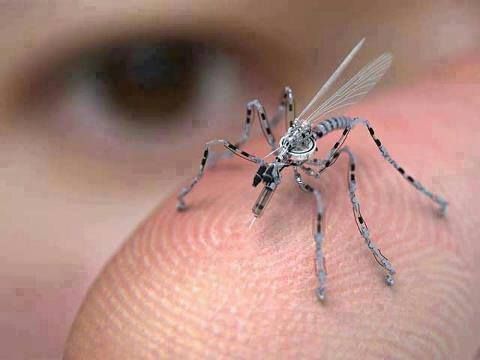Jakarta, Indonesia Sentinel — China has unveiling of a new military innovation, a mosquito sized drone designed for stealth and covert surveillance missions. The micro drone, developed under the supervision of the central government, showcases China’s growing dominance in defense technology.
The micro drone is the product of research conducted at the Robotics Laboratory of the National University of Defense Technology (NUDT), a military university located in Changsha, Hunan Province. The mosquito Drone recently featured on CCTV 7, China’s official military television channel, according to The Economic Times on Friday (June 27).
While an early prototype was revealed as far back as 2013, the latest version marks a significant leap in capability and sophistication. Designed to closely mimic the physical structure and flight behavior of a mosquito, the drone operates with near-total silence and is intended for stealth intelligence operations in densely populated urban environments.
“This is a mosquito-like bionic robot,” said NUDT researcher Liang Hexiang during the broadcast. “Such a miniaturized system is ideal for intelligence-gathering and specialized missions in combat zones.”
Measuring just 1.3 centimeters in length and weighing less than 0.3 grams, the tiny robot features two ultra-thin flapping wings and three lightweight legs for landing on various surfaces. Its insect-like design enables it to evade detection by traditional radar systems.
Read Also:
Indonesian Tech Firm Unveils Country’s First Autonomous Metahuman AI Named ‘Nirmala’
Experts say that the drone can only be detected using advanced tools such as millimeter-wave radar, AI-powered cameras capable of spotting unnatural insect movements, electronic spectrum monitoring systems (ESM) for detecting unusual wireless signals, or thermal sensors that can pick up the heat emitted by the tiny onboard motor.
The drone is remotely controlled via a smartphone app, giving operators a practical and potentially lethal edge in modern warfare. Though it may appear toy-like in size, analysts warn that it could become one of the most dangerous surveillance tools ever developed.
Currently, the drone is intended for use in military conflict zones, but researchers note its future applications could include medicine, agriculture, and disaster relief, particularly in areas inaccessible to humans.
Still, concerns over the technology’s potential misuse are growing. Defense expert warns the drone could be exploited for cyberespionage, including stealing passwords or sensitive data. Other experts caution it could be used to deliver deadly pathogens or toxic substances, especially if deployed autonomously.
(Raidi/Agung)

























